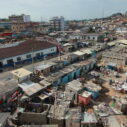
Search
Some National Measures
Most countries in the world have permanent national income poverty statistics. These cannot be compared across countries, but are used to guide national policies. In the same way, many countries are designing national Multidimensional Poverty Indices (MPIs). Others have implemented national or local MPIs as official poverty measures. Examples of official permanent national MPIs include:
- 2009: Mexico
- 2010: Bhutan
- 2011: Colombia
- 2014: Ho Chi Minh City (Viet Nam) and South Africa
- 2015: Chile, El Salvador, Costa Rica and Viet Nam
- 2016: Ecuador, Pakistan, Honduras, Mozambique, Armenia and Malaysia
- 2017: Panama, Dominican Republic, and Nepal
- 2018: Nigeria, Philippines (initial methodology), and Rwanda
- 2019: Guatemala, Afghanistan, Sierra Leone, Angola (municipal level) and Thailand
- 2020: Seychelles, Maldives, Palestine, Ghana and Angola (national level)
- 2021: Paraguay, Namibia, Malawi, Sri Lanka, India and Botswana (pilot)
- 2022: Uganda and Samoa
- 2023: Mauritania, Belize, Sri Lanka, Bhutan and Suriname
- 2024: Uzbekistan (pilot), Moldova, Somalia, and Egypt
- 2025: Uruguay
The MPI is a comprehensive measurement tool that can provide a holistic understanding of the lives of the poor while enabling more effective and efficient poverty reduction policymaking. Countries from every continent except Antarctica and Oceania have adopted official national MPIs. These countries continue to find new uses for their measures, using them for monitoring poverty trends, evaluating poverty reduction policies, national planning, SDG prioritization, intra-government coordination across ministries, budget allocation and policy formulation.
Because national MPIs are developed and calculated locally by each country, they can be tailored to that particular country and its needs. National governments have complete ownership over these measures, which are embedded into governance systems, ensuring sustainability over time.
There are many countries around to the world which are working on building their first official national MPIs as permanent statistics of poverty. Updates are posted as they become available. To find out more details, visit the pages of member countries of the MPPN here.
Articles on National MPIs
















